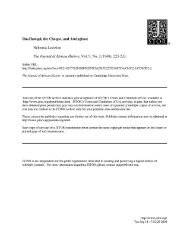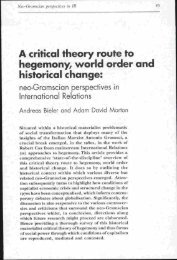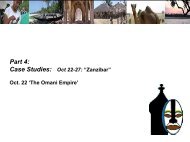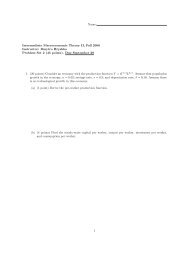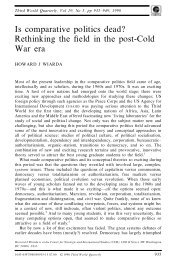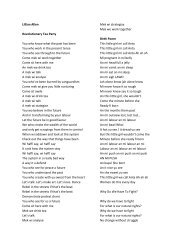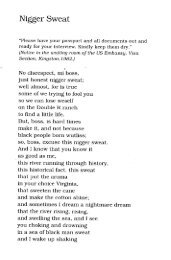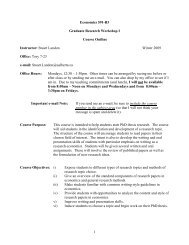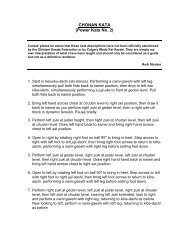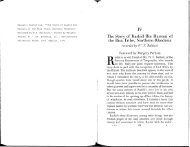personal memories revolutionary states and indian ocean migrations
personal memories revolutionary states and indian ocean migrations
personal memories revolutionary states and indian ocean migrations
Create successful ePaper yourself
Turn your PDF publications into a flip-book with our unique Google optimized e-Paper software.
PERSONAL MEMORIES<br />
REVOLUTIONARY STATES<br />
AND INDIAN OCEAN MIGRATIONS<br />
M<strong>and</strong>ana Limbert ∗<br />
In the first half of the twentieth century, thous<strong>and</strong>s of Omanis traveled on<br />
dhows from Southern Arabia to East Africa. The descendents of earlier periods of<br />
Omani migration, first during the height of the Omani Ya‘ariba dynasty in the midseventeenth<br />
century <strong>and</strong> then during the move of the Omani capital from Muscat<br />
to Zanzibar in the mid-nineteenth century under the rule of Seyyed Said bin Sultan<br />
al-Bu Saidi, were thus met with a new wave of immigrants. However, unlike the<br />
earlier waves from Oman to Zanzibar, many of those who traveled at the beginning<br />
of the twentieth century were from oasis towns <strong>and</strong> villages in what is now called<br />
the “Interior” region (al-Dakhiliya) of Oman. They were poorer than their<br />
established predecessors <strong>and</strong> often worked as farmers, shopkeepers, migrant<br />
laborers <strong>and</strong> plantation supervisors. And, unlike the previous waves of Omani<br />
migration to East Africa, the early twentieth century wave also included many<br />
women.<br />
This article focuses on one woman’s <strong>personal</strong> story of life in Zanzibar <strong>and</strong><br />
her return to Oman at the height of the revolution in 1964. Although her story does<br />
not detail the procedures of migration as evidenced in other <strong>personal</strong> accounts <strong>and</strong><br />
in the archival record, her story sheds light on the practices <strong>and</strong> choices of everyday<br />
life among non-elite Omanis moving to <strong>and</strong> living in rural Zanzibar as well as on<br />
the ways that <strong>memories</strong> of life in East Africa become meaningful in contemporary<br />
Oman. In particular, her story reveals the importance of “work” in Zanzibar, both<br />
for her <strong>and</strong> for the ways that social relations <strong>and</strong> social identities on the farm are<br />
remembered. For herself, she emphasizes her role in running a store, an activity that<br />
her status as an “Arab” woman would have prevented in Oman. And, for the social<br />
relations on the farm, she <strong>and</strong> her gr<strong>and</strong>son navigate through the pitfalls <strong>and</strong><br />
assumptions about labor, servitude <strong>and</strong> wages as they have been transformed in<br />
Oman <strong>and</strong> become a lens through which to underst<strong>and</strong> life in Zanzibar. In this<br />
context especially, what the woman chose to describe was as significant as what she<br />
chose not to say. Finally, her story reveals how she <strong>and</strong> her family survived the<br />
massacres of Arabs in Zanzibar’s rural areas in 1964 <strong>and</strong> eventually made their way<br />
back to Oman. 1 All these aspects of her past highlight not so much her distinction<br />
from <strong>and</strong> tensions with her East African neighbors, but the local, Omani, social<br />
divisions. They reveal, as well, her pride in her independence <strong>and</strong> fearlessness, a<br />
∗ M<strong>and</strong>ana Limbert is an assistant professor of anthropology at Queens College, City University of<br />
New York. She is currently writing a book about the social life of Omanis in Zanzibar in the first half<br />
of the twentieth century.



